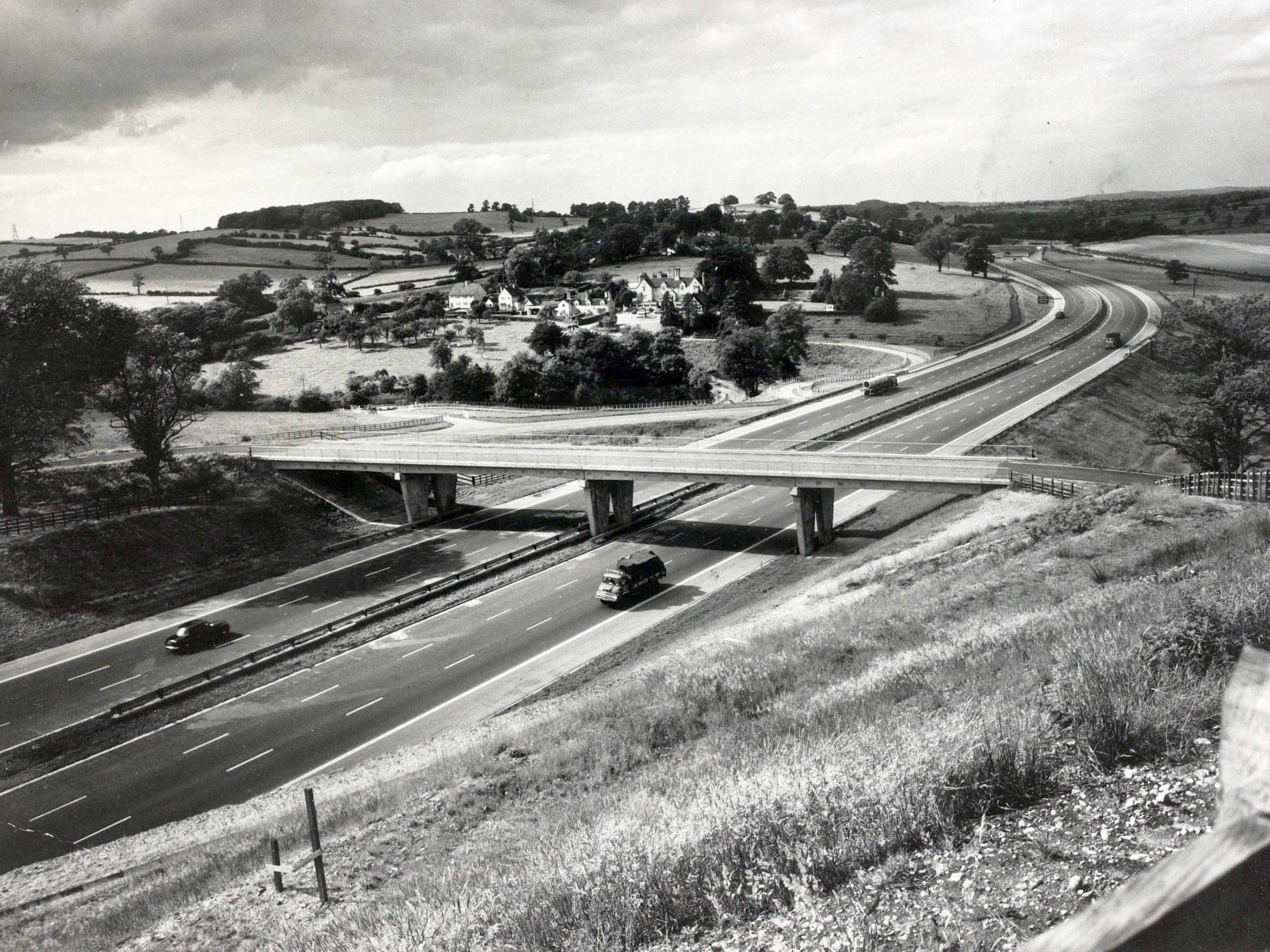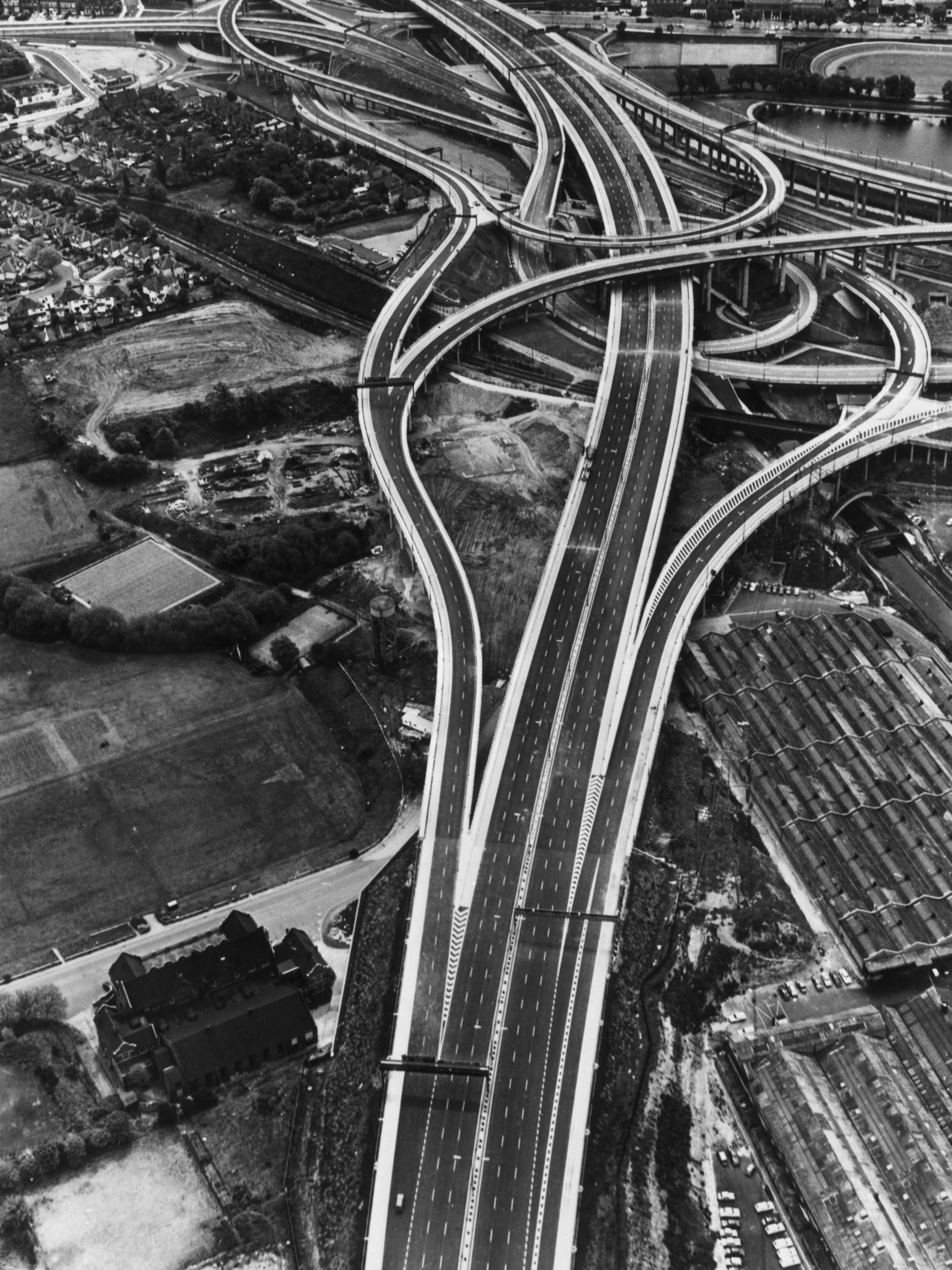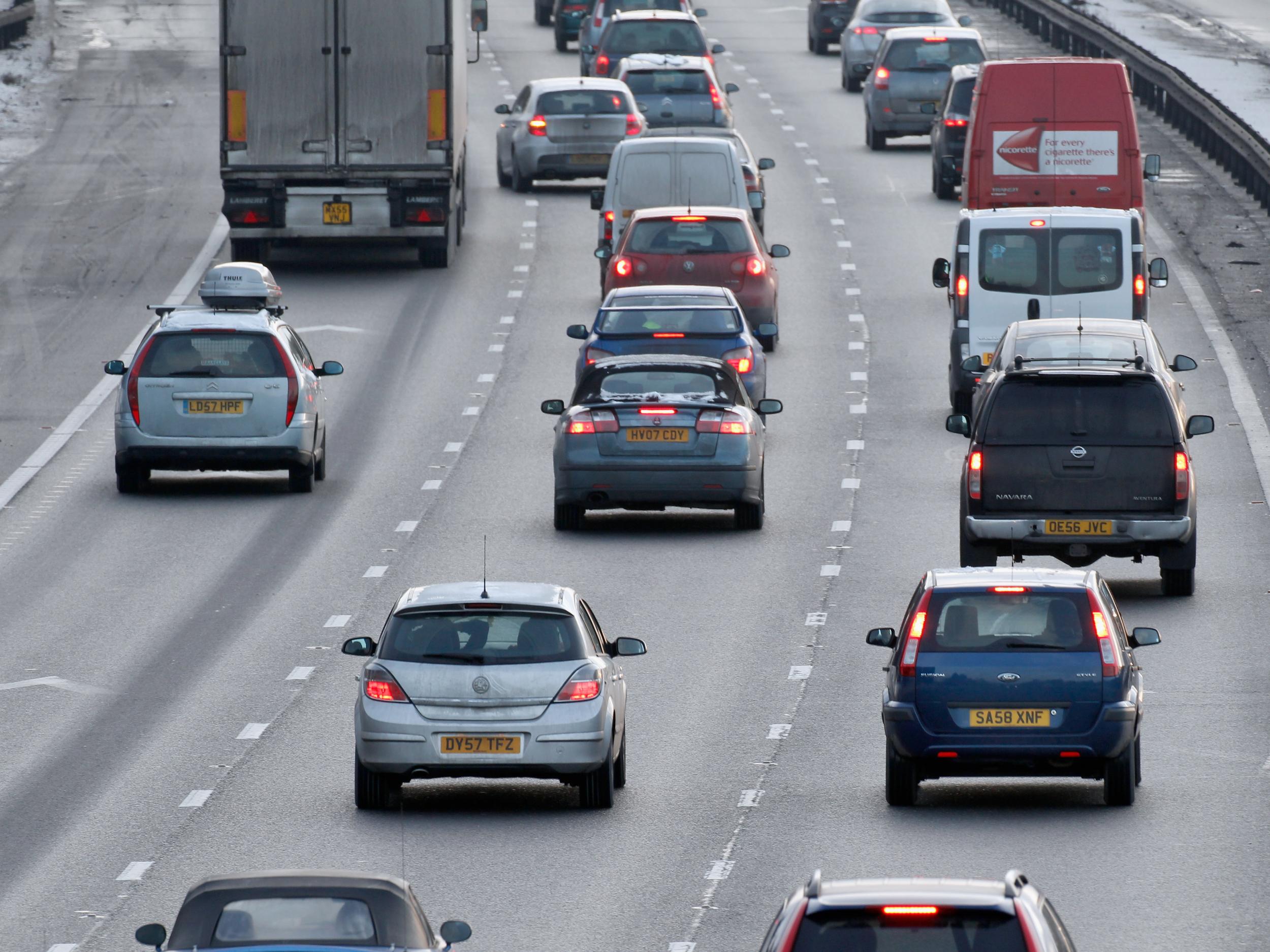Connecting North to South: How the country's first motorway changed road travel
Britain’s first stretch of motorway, the M6 near Preston, was opened on this day in 1958. David Barnett offers his own ode to the road that has played such a big part in his life

Happy birthday, you old M6. You have carried me aloft to North, to South: to the places where infant memories were made, to the first tentative steps to adulthood, to the long, long drive to face tragedy head on.
I have cursed your clogged arteries; I have stared down death in your fast-moving lanes. I have been given succour by the comfort of your cold, hard shoulder while waiting for help. You are the brightest, the darkest, the best, the worst. You are the first.
On 5 December 1958, what was then called the Preston By-Pass was officially opened by the Prime Minister, Harold Macmillan. Hundreds of people gathered on that cold winter day to witness the auspicious event which had been more than 20 years in the making. Difficult to conceive of today, but before that date, there were no motorways in Britain.
They made a celebratory booklet for it. Can you imagine? A souvenir for the opening of a road. But these were interesting times, progressive times, times of change. Within five years, Macmillan’s successor Harold Wilson would be talking of the white heat of technology which was going to transform Britain.
Perhaps on that December day in 1958 there was no heat, white or otherwise, on the wind-swept site of what had once been industrial land and open fields east of Preston, one of the great industrial towns of the North, but the sentiment was similar; the future had arrived.
“The opening of the Preston By-Pass marks the beginning of a new era of motoring in Britain,” said the souvenir pamphlet, best read aloud in the manner of one of those clipped-toned radio announcers of the Home Service. “It is the first link in the network of motorways, which, progressively completed, will contribute to an increasing extent to the health of the community and to the national economy.”

That very first stretch of motorway ran to a little more than eight miles, from what is now Junction 29, at Bamber Bridge, to Junction 32, which is where the M55 hives off and takes holiday-makers to Blackpool. Prior to the By-Pass opening, the main route through Preston involved negotiating the A6, but increasing populations and car ownership meant the road was rapidly becoming unfit for purpose.
Both of those junctions have played a part in my working life, as a young reporter living in Wigan, to the south, but working in Preston. My first beat at the Lancashire Evening Post was covering the area known since local authority reorganisation in 1974 as South Ribble: Leyland, Bamber Bridge, Samlesbury.
My first car was a red Austin Metro and it would carry me from Wigan (Junction 27) up the M6 to my patch; from there, I would rejoin the M6 and head up to Junction 32, peeling off from the Blackpool bound traffic (heading for the Pleasure Beach in the summer months; the Illuminations in winter) and take my day’s offerings to the newsdesk, based in a glass and red metal edifice just off the junction. On clear, still days, having a cigarette in the car park, you could hear the incessant whisper of traffic on the motorway.
By the time the stretch opened on 5 December, there had been 3.4 million tons of earth excavated from the route. This was originally going to be used to form the bankings shielding the motorway from the surrounding areas, but incessant rainfall during construction made this impossible, so a further 668,000 tons of earth had to be brought in for that. There were 22 bridges constructed along the stretch, including one that carried the road over the River Ribble.
In 1936 the original plan had been to widen the A6, but the rapid increase in development either side of the road meant this was impossible, so plans started to be drawn up for a brand new road. Preliminary investigations into potential routes were interrupted by the war, and when they resumed in the late-1940s the Preston By-Pass was back at the top of the agenda.
The Special Roads Act of 1949 made provision for a new concept: roads only open to motor traffic, and to certain classes of traffic at that. The idea of the motorway as we know it was taking shape, and what would become the M6 was going to pioneer this brand new idea.
Driving over the wide, glittering expanse of the Ribble, I would ask my dad if that’s where he was taking me fishing; it wasn’t, we were headed a little further north, to the Lancaster Canal. Angling was his passion, and he would take me with him from a very young age. He once pulled an eel from one watercourse or another; I fled along the bank, screaming that he’d caught a snake.
The M6 would carry us on day trips and holidays. Usually north, to Blackpool, to Morecambe, to the Lake District, to Scotland. South on the interminable drive to Dorset in summer.

Last year, my eyes blurred by tears that wouldn’t stop coming, I negotiated the stretch of the M6 that had been born the Preston By-Pass, responding to the early morning call that my dad had died. And all I could think was that I wished I’d taken more interest in fishing.
The celebration booklet that accompanied the opening in 1958 was very optimistic about the enjoyment that would result from using the new motorway: “It is to be hoped that the absence of long lengths of straight road and the variety and treatment of the bridges will prevent the boredom which is sometimes reported as occurring on foreign motorways.”
I remember driving back from work one cold, dark night, the car running on fumes of petrol – which was the normal way of things for a twenty-something who found better uses for his money than maintaining his car. I planned to get petrol at the Charnock Richard services between Preston and Wigan; my car had other ideas, coasting to a halt maybe half a mile away.
Walking along the hard shoulder with a petrol can in hand, I wondered at the different sensation of being a pedestrian on this road, by committing an act – albeit out of necessity – prohibited by the Special Roads Act, 1949. Uninsulated by a car, there was something almost primal and naked about walking alongside the speed and proximity of the vehicles, all bright lights and dirty rain spraying from tyres.
One careless, distracted driver, and I could have died. Though I think the nearest I came to that was while driving south, heading for the Glastonbury Festival with a mate in the passenger seat, buoyed on bonhomie and excitement. A lorry carrying a load of bricks veered out from the first lane to the middle one, right alongside us who were evidently in his blind spot.
I wrenched the wheel to the right, making that split-second decision between a certain collision from the back end of a lorry and whatever was coming up in the outside lane. The car skidded and juddered; I fought with the wheel, getting us straight. The lorry driver stared at us, ashen-faced. There was nothing beside or behind us in the fast lane. We gave him the thumbs up. Everything was all right.

The Preston By-Pass was the brainchild of Sir James Drake, the nation’s Surveyor and Bridgemaster, who was also called the Brunel of the Motorway Age. Indeed, though it was a relatively short first stretch of road, the engineering acumen needed to create the By-Pass had not been seen since the age of the railways.
Drake’s vision was helped to become reality by men like Harry Yeadon. A Lancastrian himself, Yeadon served with the Royal Engineers in Italy in the war, and saw first hand the European penchant for long, straight roads. When Drake retired in 1974, Yeadon stepped up to the position of Surveyor and Bridgemaster, overseeing the rapid expansion of the nation’s motorway network.
He always had a soft spot for his native county, though, and ensured Lancashire was well-served by motorways, the original Preston By-Pass eventually linking in with the M55 to the coast, the M61 to Manchester, the M62 to Leeds, the M65 to the witch-country of Pendle, Burnley and beyond.
Within the first month of operation, it was estimated that 2,300 cars were using the Preston By-Pass each day, which by today’s standards would feel like driving on practically an empty road. There was no speed limit enforced in the early days. The 70mph-speed limit on motorways was introduced in 1965, following a series of collisions in heavy fog that year. The average speed recorded by police in the first month of the Preston By-Pass was 38mph, said to be due to wariness on the part of motorists about the potential to go as fast as they liked.
On 21 January 1959, just 46 days after opening, the road was closed for the first time for resurfacing work as water had seeped into the foundations and, following a hard frost, caused cracking. The M6 today runs from Rugby in the South to Carlisle in the North. If you could drive the length of it without encountering roadworks or delays due to an accident or a breakdown, you’d have the ghosts of Sir James Drake and Harry Yeadon looking down on you.
So, happy birthday, you old M6. You were built long before I was born, and may you endure long after I’ve gone. My daughter, curiously but coincidentally, shares your special day. Where would we be without you, and the motorway network you begat? Still stuck on the A6, wondering if we’d get to the Blackpool Illuminations before they switched them off, no doubt.
Join our commenting forum
Join thought-provoking conversations, follow other Independent readers and see their replies
Comments
Bookmark popover
Removed from bookmarks